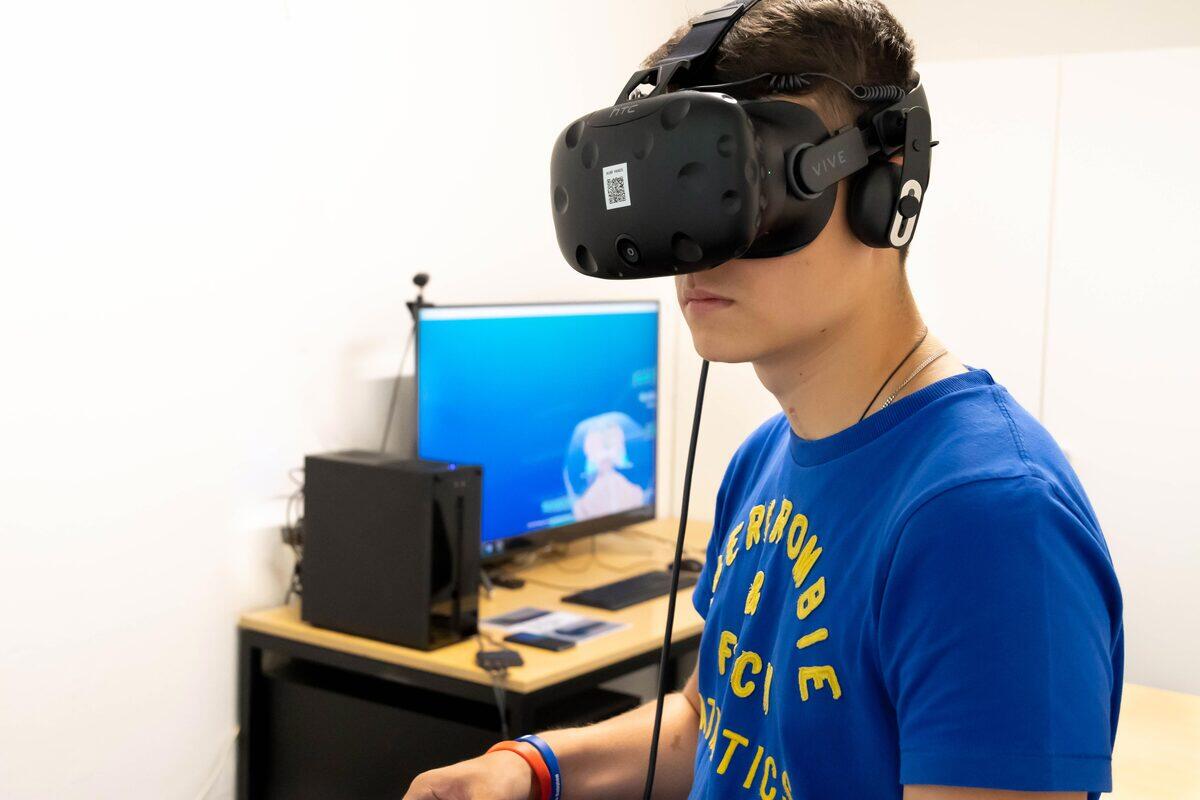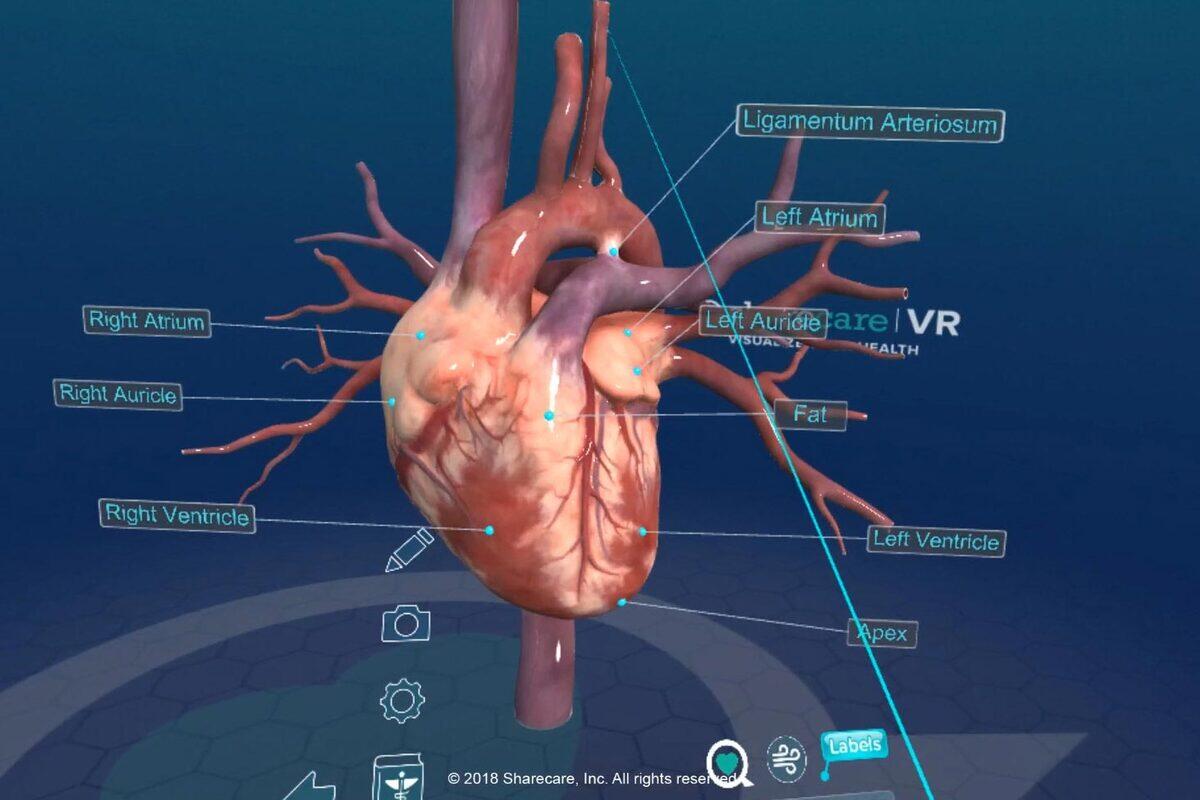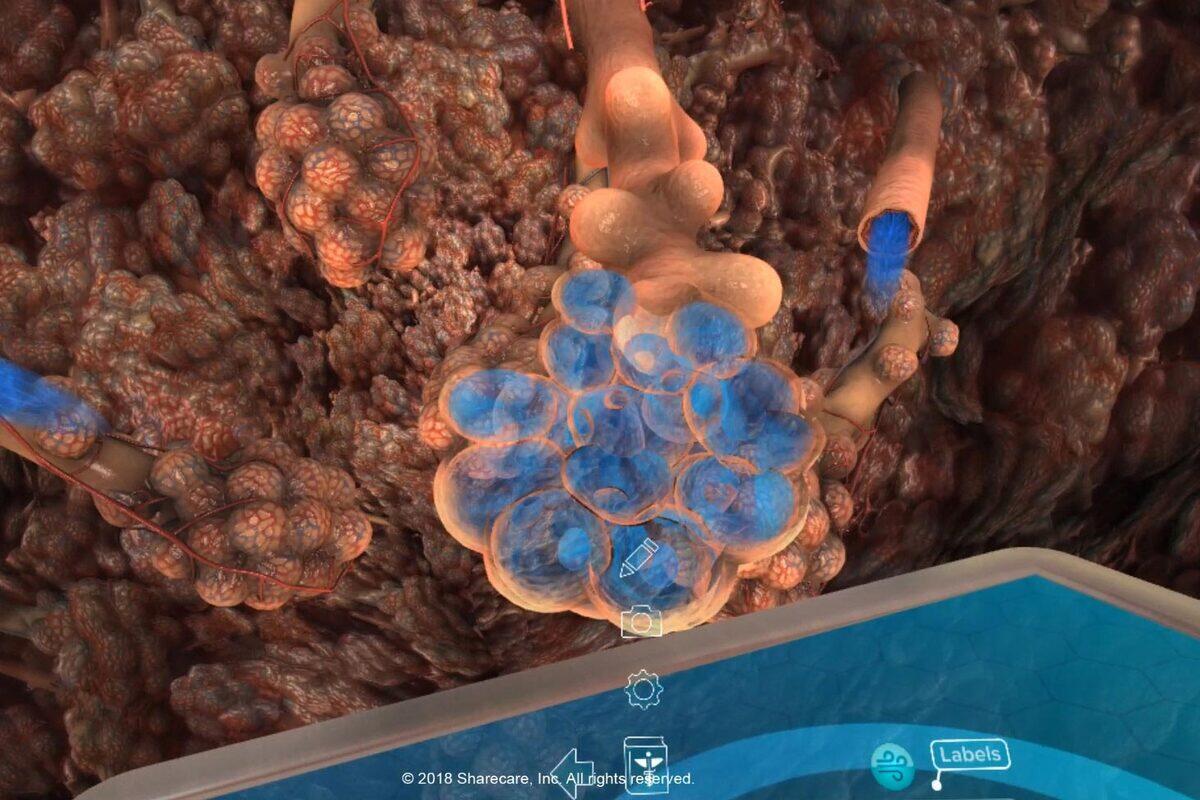Why did you choose this topic for your thesis as a media and technology expert or «mediamatiker»?
The main requirement was to benefit the institute. The IML is constantly trying out new e-learning methods. Virtual Reality (VR) interested me because the topic is tangible and I've heard a lot about it. I wanted to take this opportunity to look into it. The title of my work is "VR-Lab for medical students". At the UniZiegler, VR equipment and VR learning software can now be reserved for the students.
What motivated you?
As a hardware fan I build computers in my free time. In the media and technology profession, the result - be it a video, a logo or a website – is often not immediately tangible. For VR, I only need a computer and a VR set. The result of the work is relatively fast. I liked the idea that my work could help students to learn and thus add value to medicine (examples see demo video).
What exactly is Virtual Reality?
Virtual reality describes the representation of an artificially created world. You need a VR set, this includes VR headsets and two controllers (remote control). The VR headset consists of two screens, one for each eye. This covers the entire field of view. The controllers usually imitate the hands.
What’s cool about it?
The headset can take you - virtually - to any place in the world. In the simulated situation - be it a human heart, a skeleton, patient care or mountains with a beautiful view – it still feels like the real world, because the field of view and the movement behave the same as in reality. In the learning center UniZiegler, a VR-Lab was set up for this new learning method. Interested students can, with agreement, use it from this coming semester on site.
What added value can VR offer students?
With VR students can, for example, experience anatomy in a different way by being able to look virtually into a body and "move" within it (see demo video). With the controller, the student can explore veins, muscles or an entire skeleton and even the inner workings of the heart. The three-dimensional space allows, for example, a walk around a heart and to study it from all perspectives. In addition, the condition of a single organ - such as a faster heartbeat, the general constitution (healthy or ill) can be adjusted.
What benefit does that bring to the IML?
One definite advantage is that the IML experimented with this technology at an early stage and tested new technical possibilities. However, as our test environment is still at an early stage, it must still be investigated before it is made available to technology students in the classroom. The point is to find out how effective this learning method actually is, what advantages and disadvantages it has for learning and how it can be improved.
What new insights did you gain?
At the beginning of the project, I thought VR was just a gimmick. Now I've discovered how "powerful" this new technique really is. Because the interior of a human being can be displayed larger and more interactively, medical connections may become more understandable, but this still needs to be scientifically verified.






